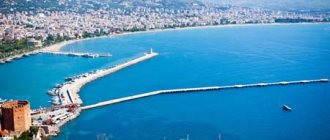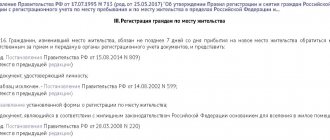Italian education system
The Italian Republic takes a responsible approach to education at all levels. Education in schools is carried out according to the program approved by the Italian Ministry of Education. Only those who have passed a difficult competitive selection can obtain a teaching position. Officials monitor the quality of teaching in both public and private schools. Universities are more free in choosing curricula.
Unlike German education, which is focused on technical disciplines, Italian education is ideal for discovering talents in the field of music, painting, and design.
Children of Italian citizens and foreigners with a residence permit are required by law to study from 6 to 14 years of age. Training is free. Children of illegal immigrants can receive basic education for free.
What is the school system like?
The educational process within the school begins for little Italians at 6 years old. It lasts 12 years and is divided into several stages:
- Primary classes (scuola primaria) – 6-10 years.
- Secondary classes of the first stage (scuola secondaria di primo grado) – 11-13 years.
- Secondary classes of the second stage (Istruzione secondaria) – 14-19 years.
Primary education is a compulsory level for all residents, including children of immigrants, regardless of whether the student's parents are legally present in Italian territory or not.
The education system in Italy also includes preschool education and university education. But both of these stages are not mandatory, and therefore parents and children can decide for themselves how multi-level the educational process will be for them. In kindergarten, children are not taught to write and read. The main emphasis is on the development of creative skills, thinking, and communication skills.
School classes begin in mid-September and last until mid-June. In each region, the exact start and end dates of classes may fall on different dates. The academic year in Italy consists of two semesters.
Preschool education
Italy ranks one of the last in Europe in terms of the number of kindergartens. Italians traditionally prefer home education. However, the situation is changing. More and more young women prefer to work rather than devote themselves entirely to family concerns. That is why, along with state ones, family kindergartens are appearing. It is not easy to open them: the premises must comply with safety standards, and the teacher must have a pedagogical education. In Italy there are also kindergartens run by monastic orders.
In kindergarten, children are introduced to the world around them, taught independence, and communication in a team. Attention is also paid to physical education, speech development, and increasing vocabulary. Some offer classes in music, painting, swimming, and dancing. The program of kindergartens at religious organizations includes memorizing prayers, studying the Bible, and singing psalms.
Study in Italy for Russians
The Italian state is home to various nationalities, including Russians. There are special Russian schools for them, where activities are conducted in Russian. There is a slight difficulty when entering university for Russian graduates who lived in their homeland.
The full course of education in Italy is thirteen years, while in Russia this figure is eleven years. For this reason, a student who has completed eleven classes will not be able to immediately enter an Italian university. To do this, he will have to study for two years at a Russian university. The advantage is that specialty does not play any role.
Russian diplomas are valid, so with such a certificate you can immediately enroll in a master's program. If you want to start studying in another specialty, you can enroll in the first year. Education for Russians is conducted in Italian, so upon admission they will test their knowledge of it.
Elementary education
Little Italians go to school at the age of 6. Studying at scuola elementare lasts 5 years. The compulsory primary school curriculum includes writing, reading, basic mathematics, music, drawing, history, physical education, and a foreign language. Children study religion if they wish.
Primary school in Italy
At the end of primary school, children receive a diploma (diploma di licenseza elementare) after passing examinations.
Italian school - how it works
School in Italy is structured differently, not the way we are used to. The first thing that surprised me was this building. After all, in Russia, if you do not change your place of residence and go to first grade, you study until tenth grade in the same school.
You move from class to class, growing up before the eyes of your teachers. You see your first teacher almost every day and, if you're lucky, you idolize and remember her all your life. In any case, this was the case for me and many of my classmates.
We celebrated the first of September, the Day of Knowledge, as a holiday with the obligatory holding of a line, flowers, ironed white aprons, and bows in the hair.
Ceremonial line-up on September 1 Russia, Novosibirsk
In Italy, this is not a holiday at all, and the school year begins in mid-September, and in some regions even later, and this is due to the hot climate.
School education is divided into three stages and these are literally three different schools with different buildings:
- Children from six to ten years old attend primary school (la scuola elementare )
- Teenagers aged eleven to thirteen go to secondary school ( la scuola media )
- Young people from fourteen to nineteen years old study science in high school (la scuola superiore ).
That is, this is the first difference in the Italian school. And they study there for 13 years.
Little Italians from three to six years old can study in an early development school (sculla materna), but attending this school is not at all necessary, so there are few preschool institutions.
In the elementary grades, the program is simple: Italian language (oral and written) without calligraphy - no one writes out sticks and letters here, mathematics, drawing, music with the obligatory study of notes and playing the simplest flute, religion if desired, and a foreign language.
In elementary school they don’t give grades, but write “satisfactory”, “good”, “excellent”.
Children of this age do not attend school on Saturdays, and children with disabilities or “sunny children” study with their peers according to the same program. For seriously ill children, a special program is created and a primary school teacher (in Italy he is called a maestro) goes to the child’s home.
School in Italy
Extortion in Italian schools is prohibited, here parents do not “share money” for repairs or gifts for the teacher, the interior is very simple without curtains and flowers on the window sills. Everything is concise, nothing superfluous. The assembly hall, which is also a playroom, there are no canteens at the school, lunches are brought centrally.
After finishing primary school, which lasts five years, a primary school graduate certificate is issued.
The academic year, like ours, lasts 9 months, but there are only 2 vacations , at Christmas - 2 weeks, and at Easter - 1 week.
Interesting on the topic: How Italians spend their days off
Education in Italy is controlled by the state and the Ministry of Education financially supports schools. This does not mean at all that there are no private schools here, but they are not very popular, especially since upon completion of studies you need to pass a state exam.
Secondary education
Secondary school in Italy is divided into compulsory junior (scuola media) and optional higher (scuola secondaria superiore). In junior secondary school, children study from 11 to 14 years of age. They study Italian and foreign languages, mathematics, art, geography, history, and other natural and humanities disciplines. At the end of each year of study at scuola media, students take exams.
After 14 years of age, children and their parents choose one of the areas of higher secondary school:
- lyceums with the prospect of continuing education at a university;
- colleges for combining regular education with vocational education.
Lyceums can be classical (Liceo Classico), linguistic (Liceo Lingtastico), natural sciences (Liceo Scientifico). In classical lyceums they teach humanities and natural subjects, in linguistic ones the emphasis is on the study of languages, natural sciences - on exact disciplines. There are also lyceums specializing in art (music, painting). After graduating from any lyceum at the age of 19, Italians receive a diploma (diploma di maturita).
College graduates receive two diplomas: secondary education and obtaining a profession. The level of preparation in colleges is insufficient for entering a university.
High school in Italy
After primary school and a three-month holiday, the second cycle of secondary education begins. It is mandatory for all children and lasts, as I already said, 3 years. Subjects are being added: art history, natural sciences (geography, physics, chemistry).
A lesson in Italy lasts one hour, not 45 minutes, as in Russia . There is only one change for about ten minutes after the second or third hour of training. No one is rushing around the school or walking around.
As a rule, at two o'clock the children are released and school buses take them home, and some of their parents come to pick them up. This schedule is very convenient, leaving time to rest and do homework in the evening.
The prestige of the teaching profession in the Italian school
In an Italian high school, the teaching profession is prestigious, competitions are held here and getting a place in a good school is a great success, so there are significantly more male teachers than in Russia. This is immediately noticeable.
There are no school uniforms here, just as there are no diaries in our understanding. It’s more of a personal diary, where they write down homework, make notes, and save it as a relic at the end of their studies. The diaries here are incredibly beautiful and choosing it is almost an event.
Yes, marks are given here, but in the interactive journal, knowledge is assessed from 1 to 10 points. Moreover, it is almost impossible to get a grade of ten - this is about, and a passing grade of “6” gives the right to move to the next grade.
In elementary school, the schedule is special. Children arrive at 8 am and finish at 4 pm.
All assignments are done at school and the child is free in the evening. Children are not left alone for a minute. There is such a position in the Italian school - bidella.
This is a person who bears a special burden:
- he arrives early to open the school
- the last one to leave, closing it
- controls the activity of students outside the class (prevents them from being naughty)
- meets unknown people on the threshold of the school and finds out the need to attend school
- Responsible for all necessary materials for classes (chalk, paper, and cleaning)
- introduces all children to the menu for the day, and each child chooses their lunch
- if the teacher needs to leave, stays in the classroom instead
Bidella undergoes a very serious selection process and his salary is decent.
As I already said, lunches are brought to school centrally on a special van and in special containers. This is very high quality food, always with fruits, yogurts, juices.
Parents pay for lunch every month using a special receipt, which indicates the monthly cost; it does not exceed 60 euros.
Higher education in Italy
There are university and non-university Italian higher education. At an Italian university you can get a bachelor's, master's, or doctorate degrees.
Classes at an Italian university
Universities offer a large selection of areas, disciplines and courses. In Italy there are 60 state universities, 3 polytechnics and 2 universities for foreigners. Non-university educational institutions have a narrow specialization. They are represented by high schools of linguistics, academies or high schools of art (AFAM), conservatories (CM and IM) and other institutions.
There is no limit on the number of places in Italian higher education institutions. There are no entrance exams. This is why audiences are often overloaded. For applicants from non-EU countries, quotas are set for many specialties.
Do you need knowledge of Italian?
Most courses are taught in Italian. There are also programs in English, but there are few of them in public educational institutions. A larger selection of English-language programs is offered by private Italian and branches of foreign universities, fashion and design schools.
Most higher education institutions in Italy do not require certificates of knowledge of the Italian language and conduct testing themselves. However, it is recommended to obtain a certificate of proficiency in Italian or English, as this will have to be attached to the documents for obtaining a student visa.
Is education paid or free?
Higher education in Italy is partially reimbursed by the state, so you will have to pay for training. The exception is the young geniuses whom Italian universities are looking for all over the world. They study for free.
Tuition fees at Italian universities
The cost of studying at public universities in Italy is up to 4,500 euros per year and depends on the prestige of the institution and the chosen specialty. Discounts are available, the size of which depends on family income (ISEE certificate). When receiving a second higher education, discounts are not provided to low-income people. In addition to tuition fees, some universities charge a registration fee, a regional education tax.
Private universities are traditionally more expensive. Their tuition fees are stable: on average up to 15,000 euros, in business schools up to 25,000 euros.
Scholarship, grants
Getting an education in Italy is not the most expensive among European countries. However, you can make it even more accessible.
You can partially or fully compensate for training costs if you take advantage of one of the scholarship programs:
- state or regional;
- selected university.
Applications for government scholarships are due in April. But the rules for receiving scholarships at universities and foundations are individual. It is necessary to clarify them on the website of the chosen educational institution, because often you need to submit an application along with documents for admission.
What documents are needed for admission?
Documents for admission must have an apostille or a certified translation into Italian. The exact list of required documents for a foreign applicant is issued by the educational institution.
The standard package of documents includes:
- completed admission form (provided by the educational institution);
- copy of the passport;
- 2 photos;
- certificate or bachelor's diploma, an extract from the record book indicating the course and hours of preparation.
A certificate of knowledge of Italian or English is also sometimes required, depending on the course chosen.
Admission of Russians and CIS residents to universities in Italy
For admission, graduates of Italian lyceums only need to present a diploma di maturita. But citizens of Russia, Kazakhstan and other CIS countries cannot enroll immediately after school. They need to equalize the number of years of study in local and Italian schools. To do this, you need to study additionally at a higher school in any EU country or complete 1-2 courses at a university in your home country, or preparatory courses in Italy.
Russians and citizens of other CIS countries should contact the department for work with foreign students of the selected university. Its staff will explain whether the applicant meets the requirements of the educational institution and what documents are required for admission. The completed package of documents must be submitted in April-May through the Italian embassy/consulate in the country of residence. Acceptance notices are usually sent out in August, and creative or language exams are taken in September, if necessary.
Without the ability to pay for the full cycle of education at an Italian university, you can take advantage of the Erasmus program, which involves student exchange. In this case, you can take a training course lasting from 3 months to a year.
The most popular universities in Italy
Milan Technical University (Politecnico di Milano). Founded in 1863. The largest technical university in Italy. More than 30 thousand students study at the same time, among whom 14% are foreigners. In addition to technical ones, there is the Faculty of Industrial Design, Art and Fashion.
Technical University of Milan
University of Bologna (Università di Bologna). Founded in 1088. The most popular faculties are law, psychology, chemistry, and archeology. About 80 thousand students study, 6% are foreigners.
University of Bologna
Sapienza University of Rome. Founded in 1303. Popular areas are archaeology, physics, aerospace engineering. More than 100 thousand students, 6% foreigners.
Milan State University (Università degli Studi di Milano). Founded in 1923. The faculties of medicine, pharmacy, and political science are popular. About 60 thousand students study, 5% are foreigners.
University of Padua (Università degli Studi di Padova). Founded in 1222. Strong in the field of medicine. More than 60 thousand students study, 4% are foreigners.
Cost of studying in Italy and scholarships
Public Italian universities are classified as inexpensive. Many of them have free programs that require annual registration fees of 3,500 - 4,000 euros. In private universities in Italy, the cost of tuition depends on the specific course, but on average a student will have to pay from 8,000 to 30,000 euros per year. Of course, each university sets its own price list.
Everyone has the right to submit an application and documents for a scholarship; as a rule, it is awarded for outstanding academic results or due to the difficult financial situation of the family. In Italian institutes specializing in programs in the field of fashion and design, grants are often awarded. Talented students receive scholarships covering from 20% to 100% of the cost of the program. To contents
Accommodation for students during their studies
In addition to paying for the tuition itself, housing costs are a major cost item for students. Not all universities have university residences (analogous to dormitories). In addition, there are always fewer places in them than there are people willing to live. This is why rental housing is popular in Italy.
Cohabitation of several students in one apartment or house is the most budget option. Renting independent housing is more expensive, but for many it is more comfortable. The cost of any rental depends on the city, area and type of building.
Students can find accommodation on the Sportello Casa service. Universities also sometimes provide assistance in finding placements.
The most famous Italian universities:
- The University of Bologna (Università di Bologna) is the oldest university in Europe. Founded in 1088. Specialized from the very beginning in the study of law. The modern University of Bologna includes more than 20 faculties, but law remains the strongest.
- Sapienza University of Rome (Sapienza – Università di Roma) is the largest European university. In 2012, there were 112.5 thousand students. The most popular university programs are the faculties of architecture, medicine and philosophy.
- Milan Technical University (Politecnico di Milano) is the largest technical university in the country. The university shows high results in the field of scientific production. Students receive technical, engineering and architectural specialties here.
- Milan State University (Statale di Milano) is famous for its scientific researchers. The percentage of students receiving master's or doctoral degrees is higher here than at other universities. Leading specialties: law, medicine and physics and mathematics.
- The University of Florence (Università degli Studi di Firenze) is also one of the oldest universities in Europe. Founded in 1321. The modern university consists of 12 faculties, where over 55 thousand students study. The most popular specialties: economics, psychology, medicine.
- Conservatory named after Luigi Cherubini in Florence (Conservatorio Luigi Cherubini) separated from the Florentine Academy of Arts in the middle. XIX century. Famous alumni include Mario Ruffini and Luigi Dallapiccola. Of particular interest is the Museum at the Conservatory, which houses a number of unique manuscripts.
- But the main musical institution in Italy is the Milan Conservatory. Giuseppe Verdi (Conservatorio di Musica “Giuseppe Verdi”). Appeared thanks to the decree of Napoleon Bonaparte in 1807. Here for the first time a course on electronic music was taught.
Italian education system: 2 comments
- DanRan31
:
01/12/2021 at 01:53
The Italian higher education system is represented by universities, technical universities, university colleges, conservatories and academies.
Answer
- PatrickAnarchy
:
05.12.2020 at 13:04
At the end of each year, exams are taken, but no grade is given - the results are given on a pass or fail basis. At the end of the secondary school stage, state examinations in all subjects are mandatory. In languages and mathematics, tests are taken in written form, in other disciplines - in oral form.
Answer
If you are planning or even dreaming about studying abroad, you need to know some facts about education in order to prepare yourself in advance for the adaptation period in a new country. So, let's understand what kind of education system is currently operating in the homeland of great artists, talented scientists, famous musicians, poets and thinkers.
The Italian education system, just like in other EU countries, includes several stages: preschool, primary, secondary and higher education. Its characteristic features are the following: the obligation to go to school until the age of 14, a guarantee of education for foreign citizens who have a residence permit, as well as the right to basic education for children who live in Italy illegally.
About preschool education:
Education for preschoolers includes 2 stages: a nursery for children from six months to 3 years old and a kindergarten for little “bambinos” 3-6 years old. Kindergartens in Italy are private, public and corporate. Preschool education in Italy is not compulsory, but is extremely popular. This can be explained by the fact that kindergartens work with the goal of educating and comprehensive development of the child, high-quality preparation of children for primary school. As a result, there are not enough public kindergartens and nurseries in the country, and private preschools are being developed, but their costs are too high for most Italians. For example, in public kindergartens parents pay only for food, while in private kindergartens, in addition to food and other services, the price includes a standard tariff.
About primary education:
Primary education is considered the first stage of compulsory education and is designed for 5 years (mainly for children 6-11 years old). Primary schools in Italy, as in most developed countries, are private and public. In the first 2 years of primary school, students undergo preparatory education (no core disciplines) and master writing, reading, arithmetic, music, drawing and, if desired, religion. After 5 years of study, the children take an oral and written exam, and if they pass successfully, they receive a certificate of primary education and move on to secondary school.
About secondary education:
Italian high school is divided into two levels: junior and senior. Junior school is compulsory and covers the age category of children
11–14 years old. After graduation, students can apply to the senior school, which in turn has two types: a vocational college and a preparatory lyceum. Colleges, like general secondary education, provide an opportunity to receive high-quality vocational training, which will allow you to start working after receiving a certificate. And preparatory lyceums provide specialized education in selected areas. After graduating from the lyceum, graduates also take an exam called “esame di maturita”. The main goal of lyceums is to prepare children for entrance examinations to universities. As a rule, lyceums provide specialized education: having chosen it, the student decides in advance on the choice of his future specialty. It is the lyceum diploma that gives the right to enter an Italian higher education institution.
Residents of other countries can also receive an Italian secondary education. But they can only do this in specialized international schools or private boarding schools. Private schools make up only 5% of the total number of educational institutions. In addition, they do not have the right to issue certificates, and their graduates take state exams. So be sure to take this into account.
Surprisingly, Italy does not have a digital rating system. To characterize students, a “verbal” assessment of knowledge is used: “good”, “excellent”, etc.
About higher education:
Unlike other countries, where higher education is most often available only at universities, in Italy this opportunity is also offered by colleges and academies. Education in Italian universities is carried out in Italian and English. In addition, students have “academic freedom” - each student decides for himself when to take the exam. Moreover, sessions may not be taken every semester. However, you may find it unusual that theses at Italian universities are taken at the end of each academic year, and not once at the end of your studies. In addition, students themselves decide which exams they will take, except for 2-3 mandatory ones, since the Italian higher education system implies an individual plan for each student. Also surprising is the lack of exam papers: in order to successfully pass the exam, a student must either attend all lectures and listen to teachers, or partially miss, for example, due to part-time work, but independently study the course of disciplines using a textbook at home. Undoubtedly, the Italian loyalty system will please you very much. Students are generally not limited by deadlines, and if you fail to pass something, you can prepare as much as your heart desires (within reason, of course).
Despite all this, we are not saying that studying in Italy will be easy. As a rule, out of 10 applicants, only 3 people reach the end. Studying in another country will a priori have its own nuances and difficulties.
What conclusions can we draw about Italian higher education?
- Compared to other European countries, studying in Italy is relatively inexpensive - about 500 euros annually and more. However, in private universities the cost is much higher;
- Creative Italian education in the field of architecture, design and fashion is one of the best in the world;
- The loyalty system and training in two languages are a definite plus.
Italy has a large number of ancient, centuries-old universities. The oldest European university, Bologna University, is located on its territory. In addition, there are many other ancient universities here: in Parma, Perugia, Padua, Naples, Rome, Florence and other cities.
The article was prepared by: International Department Manager Diana Sapotko.
For any questions, please contact us by email or by phone +375 44 507 9000
You can find out more detailed information about education in Italy and other countries on our website in the Knowledge Base section.











